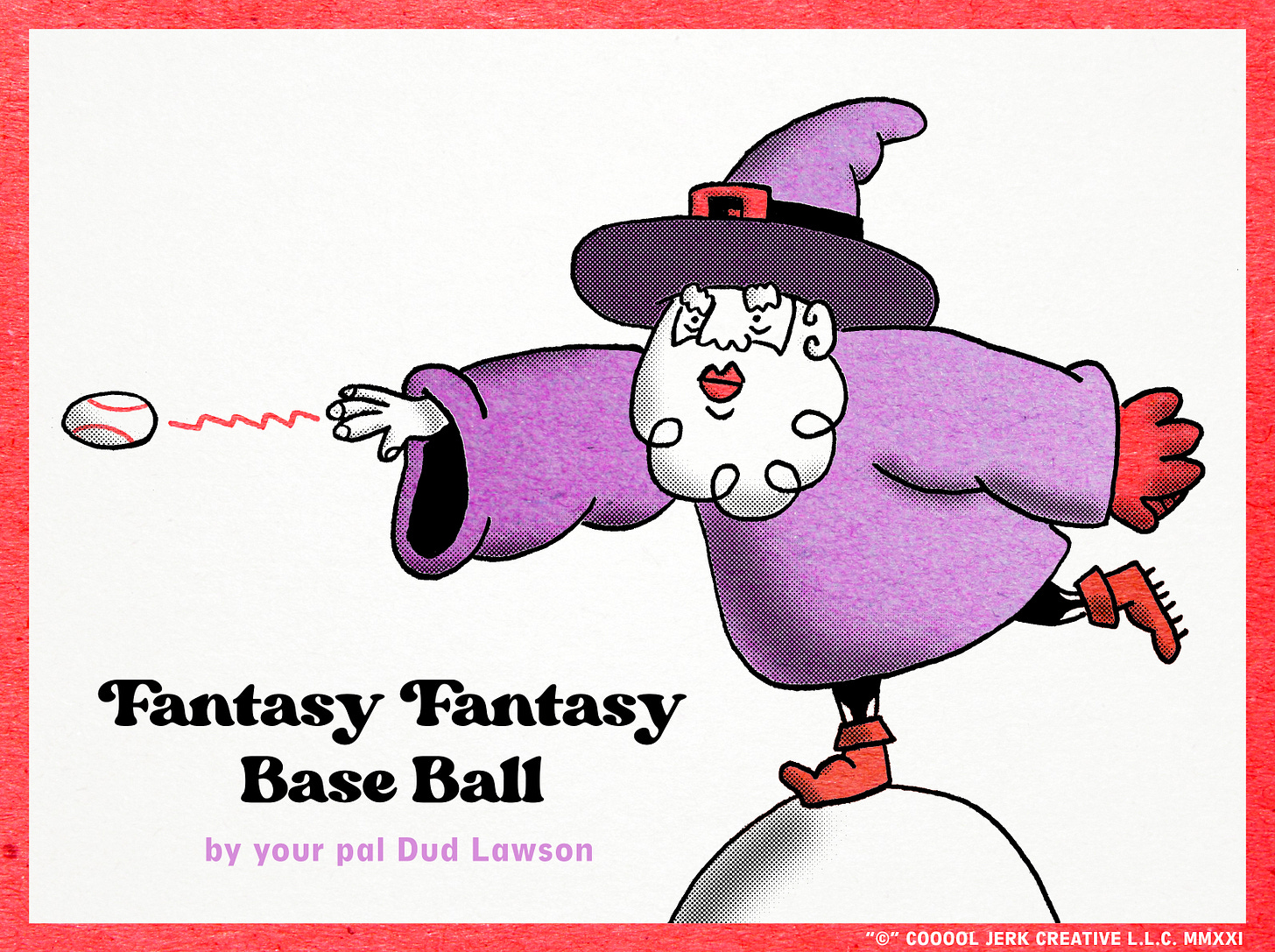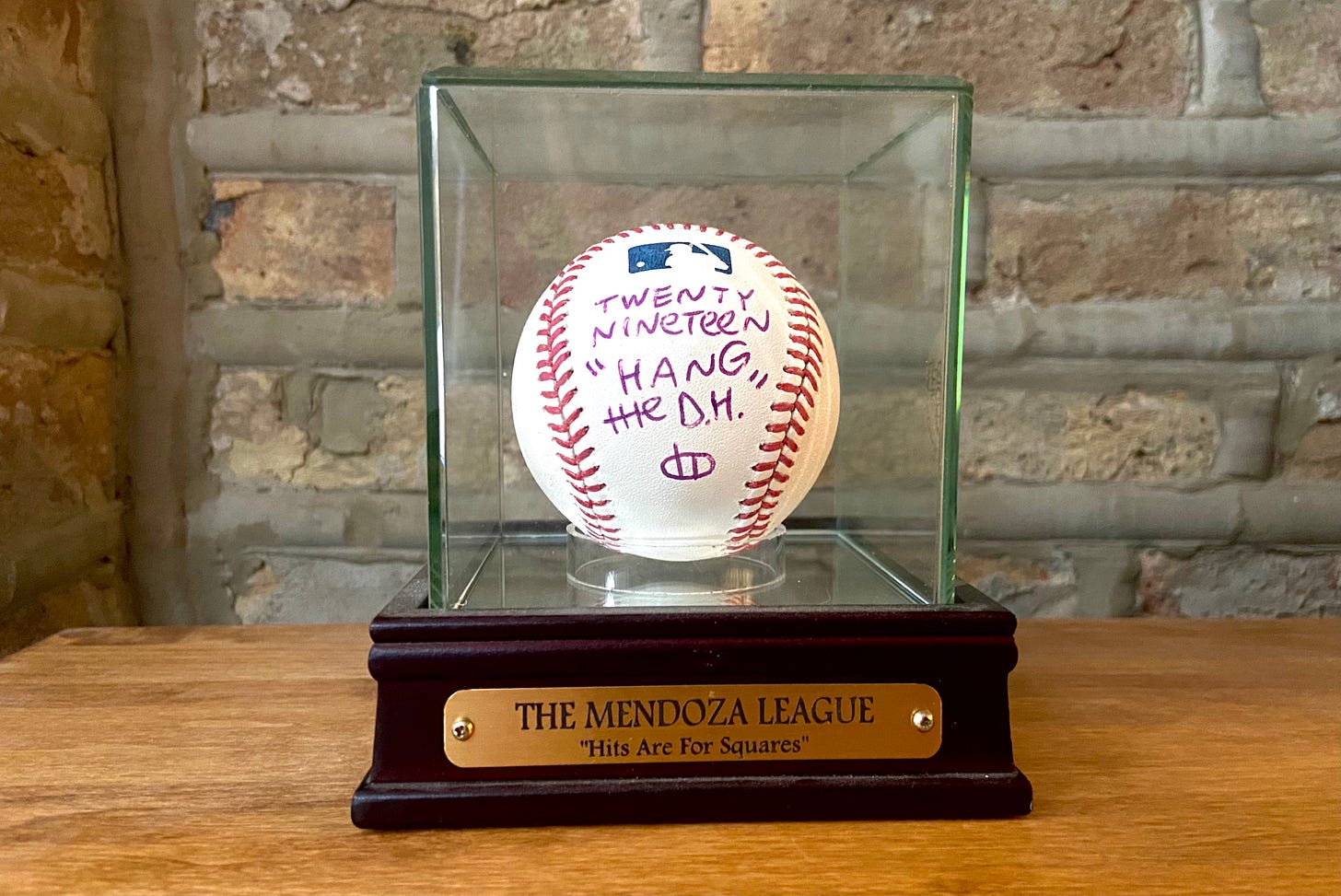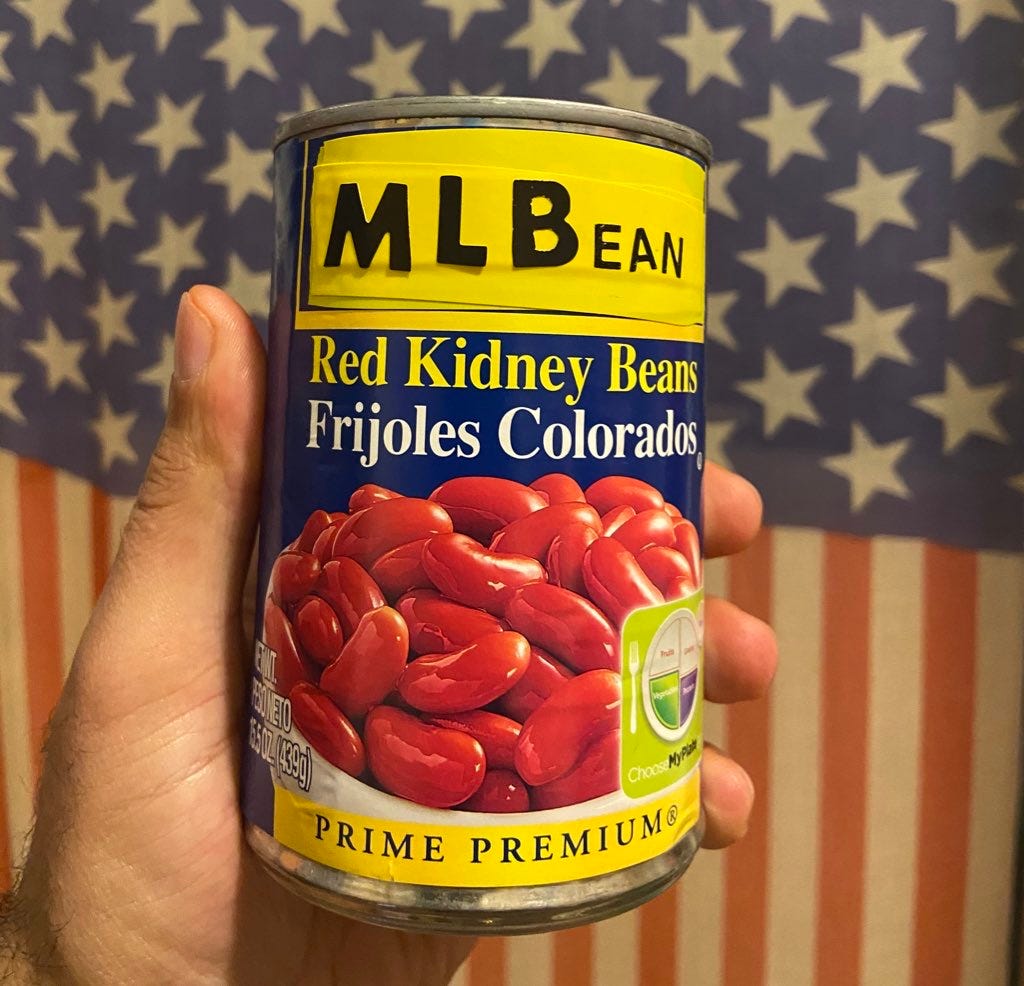Leading up to the 2021 MLB season that may-or-may-not (& prob shouldn’t happen) I’ll share a few wackadoo fantasy base ball formats that you might want to play on your own. We’ll start with my personal favorite: The Mendoza League.
I retired from Fantasy sports after spending the fall of 2007 destroying everyone week-after-week simply by having Tom Brady and Randy Moss on the same roster. Gross.
It was miserable and I hated it, but at least it was only once a week. Even thought I’ve always enjoyed watching base ball more than any other sport, I never played in fantasy base ball leagues out of the fear that I’d resent having to keep tabs on it for (at least) 162 consecutive days.
But after nearly a decade away from fantasy sports, I decided to make a fantasy base ball league that I actually wanted to keep up with every day.
My favorite part of Base Ball Tonight was always the Web Gems where they highlighted all the best defensive plays of the day, so I decided to make a league that focused on the part I honestly liked most: catchin’ the dang ball.

The Mendoza League
I’ve always been fascinated by the weirdly specific diss instigated by George Brett and perpetuated by Chris Berman: The Mendoza Line. Essentially if you’re hitting better than .200 you’re not that bad. If you’re hitting below it, well, you are.
The entire premise here seems a little unfair (especially since Mendoza’s career average over 9 seasons was .215) but my main thought was for someone to play in the league as long as Mr. Mendoza did, you had to be doing something right.
So I started The Mendoza League: a Fantasy Base ball format that would (in theory) make Mario Mendoza the MVP every year.
Over the past few years, I’ve tweaked the scoring based on what does and doesn’t work, and after a few tried I think we’ve landed on a format that’s going to work pretty well.
But first, how we got here…
Season 1: Abject Chaos
The first Mendoza League season I organized was complete madness. In an effort to make it an “anything but batting” league, I basically picked every non-hitting statistic possible. Several of them contradicted each other (like Steals and Caught Stealing) and it was complete madness. Indiscernible patterns. Pure madness. Gabillion point swings on the leaderboard from one day to the next.
I will say that I learned a good rule of thumb is to not have more scoring categories than you do managers in your league.
Season 2: Regular Chaos
The second year I culled down the number of statistics to only fielding (Put Outs, Assists, Double Plays Turned), but still wanted a little bit of chaos. With that in mind, I rationalized that even though we weren’t awarding any points for hits, everyone can acknowledge that hitting for the cycle is pretty impressive.
So nobody got any credit for hitting unless they got a Single, Double, Triple and Home Run in the same game. While it did make things more interesting, it was also infuriatingly unpredictable — especially since the only category no one could plan for ended up deciding the winner.
Season 3: True Outcomes
There’s something to be said for simplicity, but there’s a lot more to be said about doin’ too much. And none of it’s good!
In the third year of our unholy experiment, I abandoned all defense entirely and switched up the format to only focus on stats the only involved the pitcher and the batter: the Three* True Outcomes. Strikeouts, Walks and Home Runs.
This format could still work, but the league elected to pay for a Fantasy host that allowed full customization setting and I got in my own way by making up my own statistics like “True Outcome Percentage.”
(Walks + Home Runs + Strikeouts + Hit by Pitch) / Plate Appearances
*Including HBP.
Season 4: Okay, We’re Onto Something
This was when we started figuring it all out. I boiled the categories down to purely defensive stats (PO, A, DPT). Other than some imbalances that weighted everything toward first basemen, the defense-only format started becoming tight enough that managers could apply some actual strategy to building a roster instead of relying purely upon chance. Plus we got a trophy!
Season 5: MLBean
Since Nobody had any idea if the season was actually going to happen, the 2020 season became a “Set it and Forget it” league. It would’ve been a shame to make anyone pay so much attention to something that might all be moot in a few weeks, so I set up the only league dumb enough for the current state if the world: MLBean, the first hit by pitch fantasy league. Each manager drafted two (2) players, one pitcher and one batter. Points for getting hit by pitch and points for plunking guys.
Anthony Rizzo and Trevor Bauer took home the trophy for me.
Season 6: This Should Work!
Now that it seems like there’s going to be a full 162-game season (even though there prob shouldn’t…) we’re going to give the new, refined defense-only format a shot. Here’s the primer I sent to managers before the draft was cancelled:
Why Hello, there
Mario Mendoza played Major League Base ball for nine years.
Over the course of nearly a decade, his career batting average was only .215.
That’s not great!
But in order to stay in The Majors for that long he must’ve been doing something right. And now there’s a league specially formulated to make Mario Mendoza the MVP every year.
Welcome to The Mendoza League: Possibly the only defense-only fantasy base ball league in the world.
This year, the Mendoza League will be a 162-game rotisserie league where managers select players and collect points over the course of the entire season based on the following statistical criteria:
FIELDING ROSTER: 5 daily players (3 INF, 2OF)
FIELDING STATISTICS
PUTOUTS (PO): +.125 points
ASSISTS (A): +.375 points
DOUBLE PLAYS TURNED (DPT): +.250 points
OUTFIELD ASSISTS (OFA):+.625 points
ERRORS: -1.00 points
Why the funky numbers? Glad ya asked! Basically, a base is worth 1/8 a point.
You earn .125 points for preventing a base being reached via putout, you get twice as many points (.250) for being involved in a play that prevents 2 bases. Every season there are about 3x as many PO as A, so to balance it out an A (.375) is worth 3x as many points as a PO.
OFA are a bonus. They’re the reason to get some actual outfielders instead of trying to game the system by loading up on first basemen listed as outfielders. You’ll get .375 for a regular assist, then the .625 OFA points are basically a bonus so you get a whole point for throwing a guy out from right, left or center field. It happens way less often than you’d think. Last season the league leader had, like, 15.
And an error is -1 whole entire point. Don’t get errors.
PITCHING ROSTER: 5 daily players (3 SP, 2RP)
PITCHING STATISTICS
TOTAL BASES ALLOWED (TBA): -.125 points
OUTS (O): +.125 points
BATTERS GROUND INTO DOUBLE PLAYS (GIDP): +.250 points
PICKOFFS (PO): +.125 points
HIT BATTERS (HB): +.125 points
Just like fielding, every base is worth 1/8 a point. Every base that a pitcher allows is
-.125. But every base you prevent earns you .125. Getting two outs in a double play earns you two bases, .250. In this league, a pickoff gets a base “back” so you earn .125 — but that also happens way less than you’d think. Pitchers also get a batter back for beaning guys because fuck the Astros.There’s a 750 inning limit, so you’ll have to use your pitchers wisely.





